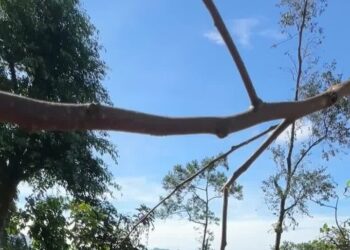The World Wants More Ube. Philippine Farmers Are Struggling to Keep Up.
In Sunnyside, Queens, people line up outside a bakery before it opens to buy a brioche doughnut whose glaze shines...
Daily Horoscope: December 29, 2025
The sky keeps pulling focus this week, thanks to a Moon that won’t sit still and a Sun pushing emotional...
Kawhi Leonard scores a career-high 55 points in Clippers’ win over Pistons
Kawhi Leonard scored a career-high 55 points, James Harden added 28 and the Clippers extended their winning streak to a...
Interoceanic Train derails in southern Mexico, killing at least 13 and injuring dozens
MEXICO CITY, Mexico — Officials said a train accident in southern Mexico killed at least 13 people and injured dozens,...
Winter storm expected to batter Midwest, Northeast with 40 million people placed on ‘bomb cyclone’ alert
A treacherous winter storm is barreling towards the Midwest and Northeast regions as upwards of 40 million Americans brace for...
‘More evidence of a cover-up’: Trump’s ‘flagrant’ violation of the law stuns analyst
President Donald Trump’s latest “flagrant violation” of the law left a Democratic analyst stunned on Sunday. Last week, the Trump...
Trump Says the U.S. Struck a ‘Big Facility’ in Campaign Against Venezuela
President Trump said in a radio interview that the United States had knocked out “a big facility” last week as...
77-year-old gunman killed after opening fire at Idaho sheriff’s office, injuring 3
A 77-year-old gunman opened fire at an Idaho sheriff’s office — injuring three people before he was killed in a...
Trump’s Bruises Spread in Blow to Leavitt’s ‘Hand Shake’ Claim
President Donald Trump slathered a fresh coat of makeup on his right hand for another round of peace talks with...
Zelensky Slyly Shuts Down Trump’s Tacky Mar-a-Lago Bragging
Volodymyr Zelensky shut down Donald Trump’s Mar-a-Lago touting following their Sunday meeting on the war in Ukraine at the Palm...














